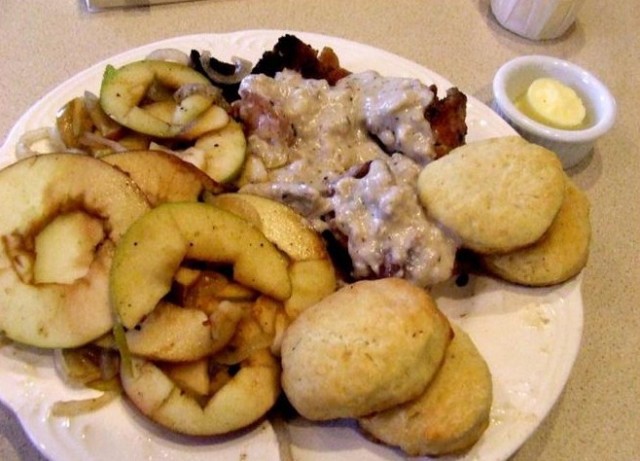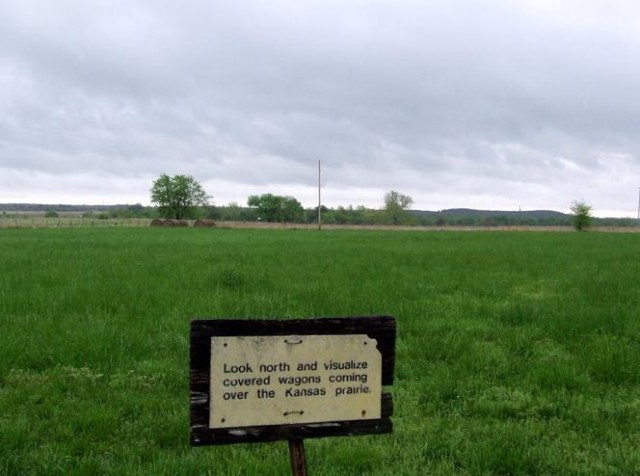Interview: Wendy McClure Goes Back to the Little House on the Prairie
by Jaime Green

When Wendy McClure’s parents were moving out of her childhood home, she rescued a box of old books from their garage — Little House in the Big Woods among them. This Laura Ingalls Wilder rediscovery set her on a “pioneer pilgrimage” into the world behind these stories, and her book, The Wilder Life (out now), chronicles this adventure, from churning butter in her Chicago apartment to sleeping in a covered wagon on the open prairie.
The first things that came back to me about the Little House books were the sensory impressions — the fresh churned butter, the vanity cakes, the, and I don’t even know which book this is in, but when they feed molasses candy to a pig?
Yeah, that’s in Farmer Boy, and the pig’s teeth stick together. They find it the next day, the pig’s looking really sad. Or even things like, also in Farmer Boy, Almanzo breaks apart a carrot, and observes that inside it looks like ice. Little things like that stick with you.
Before you started visiting the historical Little House sites, you started following recipes from the Laura Ingalls Wilder cookbook. Was it as satisfying to taste these foods as you thought it’d be?
Well, it was mixed. There was definitely satisfaction and the “Wow, I did this!” factor. I’m still putting up all the pictures on my Facebook page — ew, that’s a disgusting clump of butter! — but there’s also that sense of “This is kinda like time travel!” Little things, like these recipes, are really portals into the world of the books. Rather than something like going out to a cabin and living off the grid.

(Salt pork and gravy, apples and onions, buttermilk biscuits, and home-churned butter.)
Not that you didn’t try that, too! You transition from churning your own butter and doing these projects in your apartment — and, by the way, kudos to you for making your own sourdough starter, I’m terrified of fermentation — to actually visiting historic Little House sites. And your boyfriend went with you? To all of these?
Most of them.
How did you swing that? Was he just into it?
He’s a wonderful soul. He’s really into pursuing things even when they’re crazy. He’d be like, “Hey, stop wondering what it would be like to do all these things, and just go ahead and do them.” I think if it had been me on my own I probably would’ve decided to do this, but it really helped getting encouragement from him — go for it, let your freak flag fly.
I’d imagine that as an adult on this pilgrimage there’s part of you thinking, “This is a thing that crazy people do.” But you ended up embracing it.
And actually you find that most of the people you meet are perfectly normal people who also think it’s the sort of thing that only crazy people do. Everyone thinks that, and then everyone meets up, and you’re like, “Hey, it’s OK!”
Although you did encounter some people whose belief systems were a little different than yours, which also informed the way they interacted with the original series. Like the homeschoolers who found all the conservative libertarian values in the book.
There really are some libertarian values in the book. Rose [Wilder Lane, Laura’s daughter (and a libertarian), collaborated with her mother on a significant amount of the text and] kinda stuck them in there. And for all I know, Laura may have as well. At the same time, it’s not all ideology — there are lots of people who really are disillusioned with the modern world, and the books become idealistic for them. Then others say the books have Christian values. I think they have great values, but I wouldn’t call them Christian.

When you were growing up, did you have a strong sense of your family’s cultural heritage?
No, I didn’t really have a strong sense of it. Both of my grandmothers were born in Chicago, first generation — one was Hungarian, one was Lithuanian. There may have been a couple of blintzes here and there, but I don’t think we had any kind of frontier existence.
I wonder if, for more recent descendants of immigrants (and I’m one as well), there’s a connection missing to the American story. And maybe these books — imagining being there with Laura — are a way to be like, “Yup, this prairie history is a little bit mine, too.”
I would love to find out that someone in my family lived in a sod house somewhere. Probably not, though. I also think, in the 1970s and ’80s, there were so many confusing mixed messages about what it means to be a girl, and I remember really turning to the Little House books because she had an obvious femininity, but it wasn’t the oppressive kind.
People sometimes call Laura a tomboy, but she wasn’t a girl who wanted to be a boy — she was just a girl who did things, a girl who was adventurous and still a girl. It’s this idea of what it is to be a girl, that it doesn’t have to be either or.
Jaime Green went to Colonial Williamsburg for a spring break in college. She hopes to return soon.
The Wilder Life is currently available on Amazon.